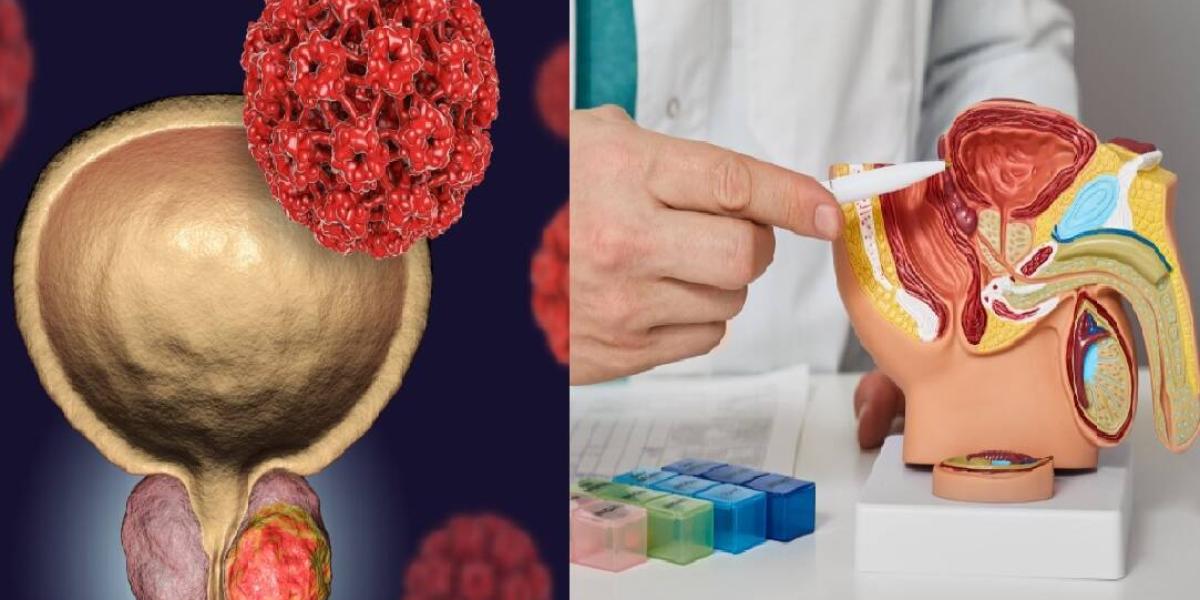The seven symptoms of prostate cancer you shouldn't ignore: pain when urinating is one of them.

Former U.S. President Joe Biden's recent announcement about his prostate cancer diagnosis rekindled the global conversation about the disease. In Colombia, prostate cancer is the most common cancer among men and one of the most deadly.

Former President Joe Biden was diagnosed with prostate cancer a few weeks ago. Photo: Courtesy
Between January 2022 and January 2023 alone, 5,793 new cases were reported in the country, representing 9.85% of the total cancers diagnosed during that period and more than 60,500 cumulative prevalent cases, according to the High Cost Account, 2023 Report. According to Globocan, the national incidence is 17 cases per 100,000 men per year.
In this regard, Cleveland Clinic Florida—an international benchmark in men's health—shares key recommendations for detecting this disease early and increasing the chances of effective treatment.

Painful urination is one of the symptoms you shouldn't ignore. Photo: iStock.
1. Difficulty urinating or weak urinary flow
2. Frequent need to urinate, especially at night
3. Pain or burning when urinating
4. Blood in urine or semen
5. Pain in the lower back, hips, or pelvis
7. Sensation of incomplete bladder emptying

Prostate cancer is the deadliest type of cancer in men. Photo: Istock
Although these symptoms may be due to other conditions, specialists warn that ignoring them can delay a vital diagnosis. In fact, in many cases, it's partners or family members who detect the changes and prompt a medical consultation.
“Prostate cancer can be silent, but when detected early, it's highly treatable. Today, we have more tools than ever to act with precision and reduce treatment side effects,” explains Dr. Christopher Weight, a urologic cancer expert at Cleveland Clinic Florida.
Who should get checked?- Men from 50 years old, or from 45 if they have a family history
- Men of African descent, overweight or obesity
- People with genetic mutations such as BRCA1 or BRCA2 (breast and ovarian cancer susceptibility genes, Breast Cancer gene 1 and 2)
1. Prostate-specific antigen (PSA)
2. Digital rectal examination (DRE), complementary to PSA
3. Multiparametric magnetic resonance imaging
4. Biopsy in case of abnormal findings

Prostate cancer occurs when prostate cells grow out of control. Photo: iStock.
Less invasive and more precise options are currently available: active surveillance, robotic surgery, high-precision radiotherapy, immunotherapy, and, in localized cases, focal therapy, which allows treatment of only the affected area, with less functional impact.
In addition to a medical checkup, Dr. Weight emphasizes adopting a preventative lifestyle: “A diet rich in vegetables, low in processed foods and sugar, combined with regular exercise, can significantly reduce the risk of developing prostate cancer.”
Cleveland Clinic Florida sent a clear message regarding this disease: prostate cancer should not be a taboo subject. Talking, consulting, and taking early action can make a difference. Biden's case shows that even the most visible figures are not exempt, but that with early diagnosis and modern care, it is possible to overcome.
Environment and Health Journalist
eltiempo


%3Aformat(jpg)%3Aquality(99)%3Awatermark(f.elconfidencial.com%2Ffile%2Fbae%2Feea%2Ffde%2Fbaeeeafde1b3229287b0c008f7602058.png%2C0%2C275%2C1)%2Ff.elconfidencial.com%2Foriginal%2F55f%2F92e%2Fc95%2F55f92ec958ffe2e165791469192f4f84.jpg&w=1280&q=100)
%3Aformat(jpg)%3Aquality(99)%3Awatermark(f.elconfidencial.com%2Ffile%2Fbae%2Feea%2Ffde%2Fbaeeeafde1b3229287b0c008f7602058.png%2C0%2C275%2C1)%2Ff.elconfidencial.com%2Foriginal%2F45a%2F483%2Fa1f%2F45a483a1f10047515937a7bb0d34b6fa.jpg&w=1280&q=100)
%3Aformat(jpg)%3Aquality(99)%3Awatermark(f.elconfidencial.com%2Ffile%2Fbae%2Feea%2Ffde%2Fbaeeeafde1b3229287b0c008f7602058.png%2C0%2C275%2C1)%2Ff.elconfidencial.com%2Foriginal%2F0cc%2F1d8%2F337%2F0cc1d8337c864f3437ad038e678edf9f.jpg&w=1280&q=100)
